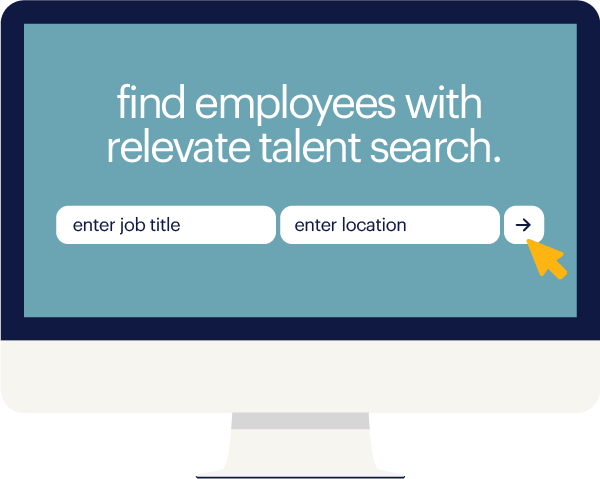Hiring in manufacturing and logistics is red-hot, with recent job growth pushing manufacturing to its highest employment levels in 69 years. But while nearly 3.5 million manufacturing jobs will likely be added in the next decade, two million of those jobs are expected to go unfilled due to a skills gap. In fact, one-third of HR professionals in manufacturing have said in recent months that they can't fill an open position. And when they are able to fill a role, it takes an average of 70 days to hire a candidate.
So what can you do to attract — and retain — top talent, especially for the industries' most in-demand roles? Here we provide four steps for addressing some of today's biggest recruitment pain points, which will put you on the road to hiring even better.
make your wages and benefits competitive
With tools like digital salary calculators and employer review sites making compensation more transparent than ever before, today's manufacturing and logistics talent know the value they bring — and what makes for a competitive compensation package. And if you need critical roles filled like materials handlers and production managers, you have to make sure hourly wages are commensurate with that value.
If it's been a while since you've taken a lay of the land or audited your compensation levels, now's the time to review your offerings again to ensure you're bringing enough to the table to get the best candidates to come play for your team. Here are some steps you can do to make your salary and benefits competitive:
1. audit your compensation levels
With employee turnover in manufacturing and logistics coming in at a whopping 32 percent, you're going to have a lot of hiring ahead, and there are few things more frustrating than losing a candidate to a competitor who offered a better hourly rate. So audit your compensation program to make sure you're as competitive as can be. Here are the types of questions you should be asking:
- Are the wages we offer commensurate with each employee's experience level, or is a forklift operator who's been with us for 10 years only making five percent more than a new hire?
- Does our comp package motivate our employees to contribute their best efforts every day?
- As employees get promotions — say, from a materials handler to a team supervisor — are we properly increasing wages to match the greater responsibilities required of the role?
2. make employees' lives flexible
Today's job seekers prioritize work-life balance, so consider offering multiple shift schedules that provide some flexibility for employees. What impact to productivity would there be if your warehouse laborers chose when between 6:00 and 8:00 a.m. they start their morning shift? Such changes will allow employees to better navigate their families' needs and arrive at work with a clear mind.
3. rethink PTO
Maybe it's been company policy to shut down floor operations for two weeks every August, but that forces everyone to take their time off when you want them to — not when they want to. Rather than structured time off, offer flexible PTO that can be used for vacation, family illness or personal appointments. Make the change even sweeter by compensating or rolling over any unused time at the end of each year.
get creative with your recruiting
You can't just post your open roles on the same job board anymore — in fact, that's a sure-fire way to surpass that 70-day time-to-fill metric mentioned earlier. This ultra-competitive market means finding new and creative ways to source not only active job seekers but passive talent — those workers who are engaged in their current role and aren't on the lookout for their next gig. Especially when it comes to tapping those younger candidates, who aren't familiar with the exciting tech developments emerging in the industry or the leadership possibilities, you're going to need to diversify your efforts.
1. peach out at the local level
Build a talent pipeline by engaging untapped resources in your community. Foster interest in your company by engaging vocational school, high school and college students who are invested in science, technology, engineering and math (STEM) initiatives. Also reach out to veterans in your area, who have extensive experience working in fast-paced, safety-conscious environments and possess the soft skills — dedication, teamwork, communications — that you need in your ranks. Here are some steps you can do to make your recruiting better:
2. prioritize internal recruiting and upskilling
The skills gap plaguing these industries won't be getting better anytime soon, so upskill and promote employees who are already providing value. Building an internal recruiting program means having access to candidates who are already familiar with the ins and outs of your company. And once employees know there's room for development and advancement, they'll be happier and more engaged as well.
3. partner with a staffing firm
There's a lot of competition out there looking to fill the same roles as you, and the wrong hire can cost you hundreds of thousands of dollars. So consider partnering with a staffing firm, which will not only give you access to a nationwide pool of candidates who have the refined skill sets you need, but the firm's deep knowledge of your industry will help you tackle any other operational challenges you may be facing.
build your employer brand
Recruiting top talent without a strong employer brand is impossible in today's market, with 91 percent of job seekers stating that they research a company before applying for a position. And in the manufacturing and logistics industries in particular, which has been dominated by the baby boomer generation, you're going to need strong branding across your digital channels to secure that future-critical millennial and Gen Z talent. Here are some steps you can do to build your employer brand:
1. promote an employee-first culture
Today's job seekers want to look forward to coming to work, and there's no better way to make that happen than by creating a positive culture. Think of ways to drive their engagement with their work, like quarterly awards for stellar performance, monthly massages for floor staff or having family-friendly picnics in the summertime to give coworkers the chance (maybe the first they've had) to get to know each other as humans. Then, showcase these events on your social channels and website to maximize awareness.
2. show employees you care about their futures
Remember what we said earlier about upskilling internal employees? Make sure external candidates know how much you care about continuous learning and professional development, too. Trumpet this mission across your digital channels — not only on social, but also on your company pages on employer-review sites. This lets candidates know that they can have a long, diverse career — not just an in-and-out job — with you.
3. change perceptions of the industries
When younger candidates think of manufacturing floors, they're likely picturing black-and-white film reels of 1940s laborers at work — not today's state-of-the-art facilities. Change the script (and bolster your employer brand) by highlighting all of the innovation taking place at your company and the safety standards you maintain to keep every worker injury-free. Drive these points home with a video series in which your employees speak to the excitement of their roles, how tech plays a part of their everyday work life and the ways they feel valued by the company. Here are some steps you can do to optimize your recruitment process:
use technology to optimize your recruitment process
We've all been job seekers at least once in our careers, and we know very well how time-consuming all of the processes can be. This is especially true in the manufacturing space, where candidates may be working 12-hour shifts that give them no time to answer an email or play phone tag during work hours. Thankfully, advancements in recruiting technology are giving manufacturing and logistics companies access to easy-to-use platforms tools that simplify the recruitment process and elevate the candidate's experience.
1. digitize time-consuming manual processes
There's no reason for routine tasks like interview scheduling and sending confirmation emails to be manual, now that AI-enabled tools with virtual assistants are readily available. Once you've updated that leg of the process, your recruiters will be better equipped to spend time building relationships with candidates who are already in the pipeline and focusing on your local outreach efforts.
2. add flexibility to the interview process
To minimize that 70-day time-to-fill metric, you're going to have to better accommodate each candidate's schedule. And that means turning once again to digital capabilities. For example, use on-demand video platforms that let applicants record their answers to interview questions on their own schedule, will will, in turn, allow you to quickly determine which candidates advance to the next round.
3. make your candidate experience mobile-friendly
We've already talked about how candidates find job postings and research companies online, but did you know they're also looking to apply for jobs from their mobile device? This is even more true for manufacturing and logistics workers, many of whom don't use a desktop computer on the job. If you're application portal runs like a GeoCities page, you're going to lose out on excellent talent. Research vendors who offer the latest in mobile-friendly application platforms and alleviate one more pain point.
the top 5 roles in manufacturing and logistics
Now that you have these insights into the hiring landscape in the manufacturing and logistics arena, head on over to these articles to take a look at how to hire for the industries' most in-demand positions:
forklift operatorAnd remember — if you're still feeling overwhelmed by today's job market and how best to overcome the skills gap plaguing employers, a staffing partner can help. Start a conversation with one of Randstad's manufacturing and logistics experts to see what they can do to match you with your next great employee. Or, head over to our Find Employees portal to browse potential candidates — all of whom are prescreened and vetted — right now.








